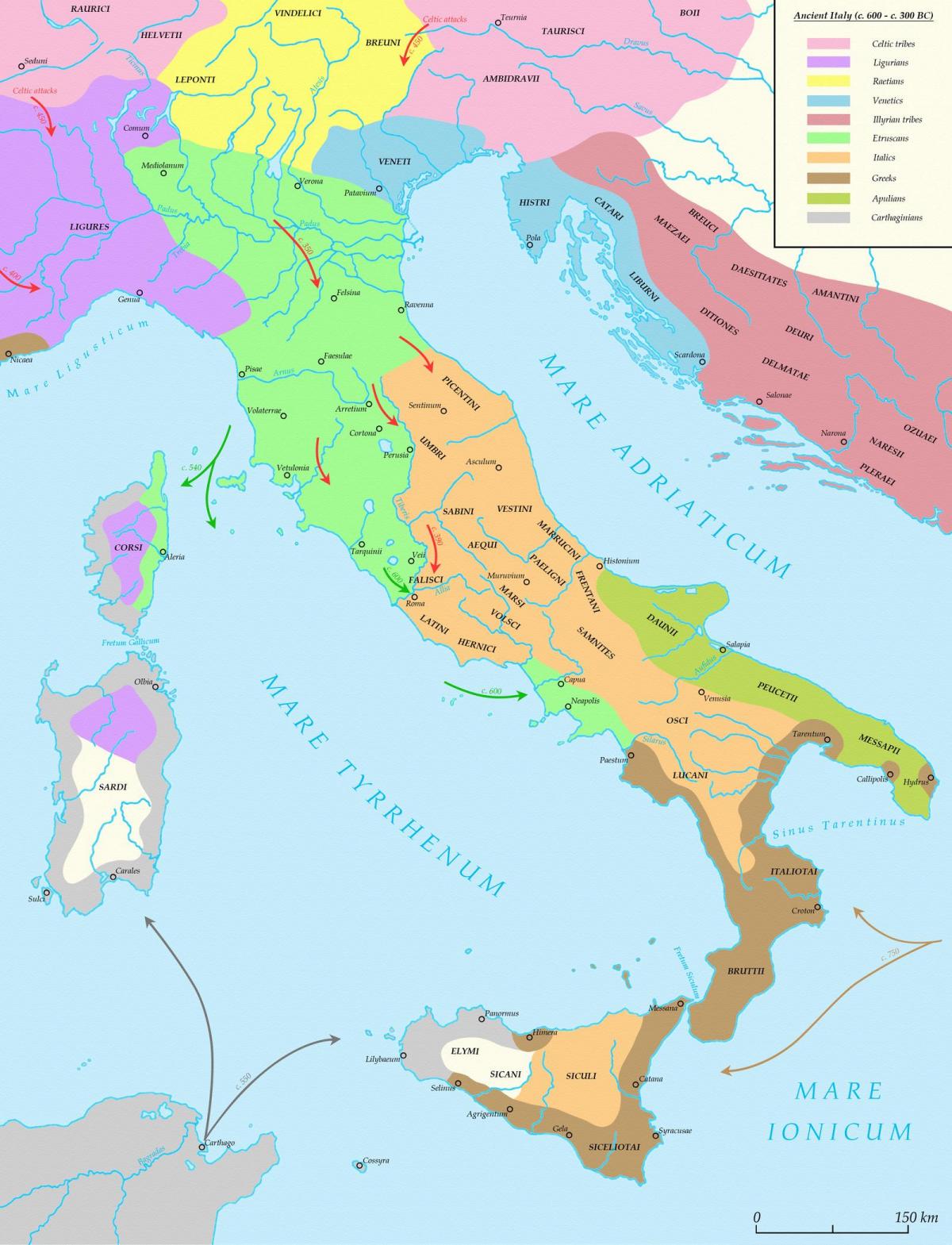search
Ancient Italy map
Map of Italy ancient. Ancient Italy map (Southern Europe - Europe) to print. Ancient Italy map (Southern Europe - Europe) to download. The Italic peoples were divided into multiple groups of which the most significant were as follows: the Latins in the area around Latium on the shores of Central Italy south of the Tiber, the Osco-Umbrians in the Apennines in Central Italy and the Samnites in the mountainous lands of Southern Italy as its shown in the ancient Italy map. Rivalling the Italic peoples were the pre-Indo-European Etruscan people in Etruria, the modern-day region of Tuscany. It is assumed that they had migrated there from the Aegean region, possibly also from Asia Minor, in the twelfth or eleventh century BC.
Subsequent centuries saw a steady continuation of migrations: Italic groups crossed over to Sicily, the Carthaginians established footholds on Sicily, Sardinia and Corsica, Celtic peoples began infiltrating certain areas of Northern Italy and from 750 BC onward, the Greeks began colonising eastern Sicily, southern Gaul and much of southern Italy as its mentioned in the ancient Italy map. The migrations going on in and around Italy fit into the pattern of the greater east-west movements of people, domesticated animals and agriculture which had been set in motion during the Neolithic Age in the Mediterranean region.
The Italian peninsula made major progress as a result: the Etruscans are credited with introducing iron equipment and the Greeks spread the new alphabetical writing system. The transition towards an urbanised, literate culture in Italy thus happened first and foremost within the Etruscan domains and the Greek colonies. It is worth noting that the Greeks generally served as tutors, the Etruscans as their eager students. Around 700 BC, the Etruscans adopted the Greek alphabet, with some variations of their own as you can see in the ancient Italy map. The Etruscan language itself remains largely unknown due to the low number of surviving texts and its completely isolated status.
The Etruscans left many funerary artefacts, particularly weapons and pottery, and from the sixth century BC onwards they constructed magnificent subterranean burial chambers where the ashes of the Etruscan elite were given a final resting place as its shown in the ancient Italy map. The notions of death and afterlife played a major role in the Etruscan religion, as did the notions of foreseeing the future and the will of the gods and interpreting relevant omens. Yet as in many other Etruscan things, Greek influence was significant and in religion too, the Etruscans ended up borrowing liberally from their Greek tutors.


